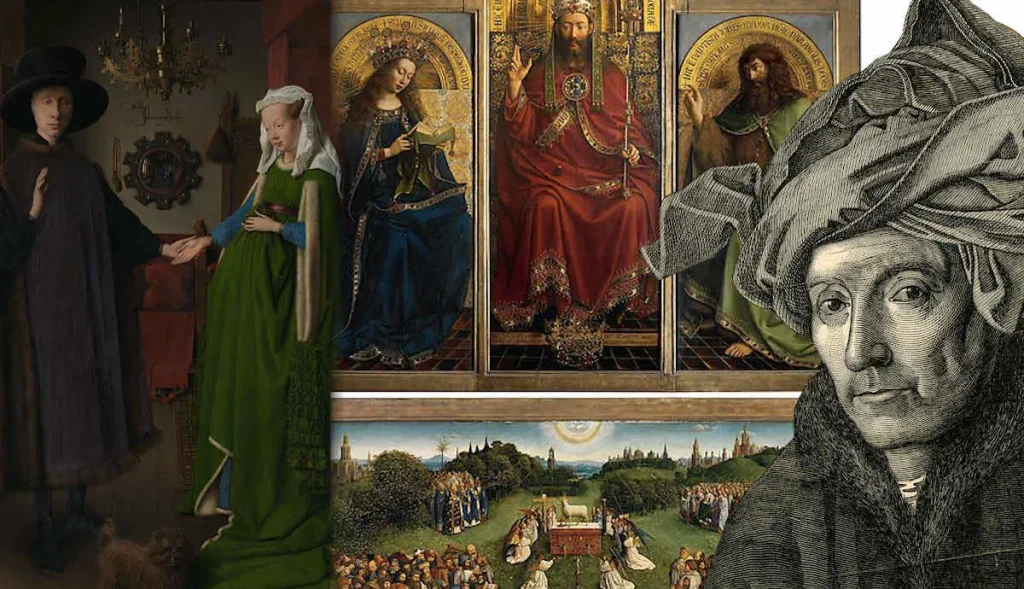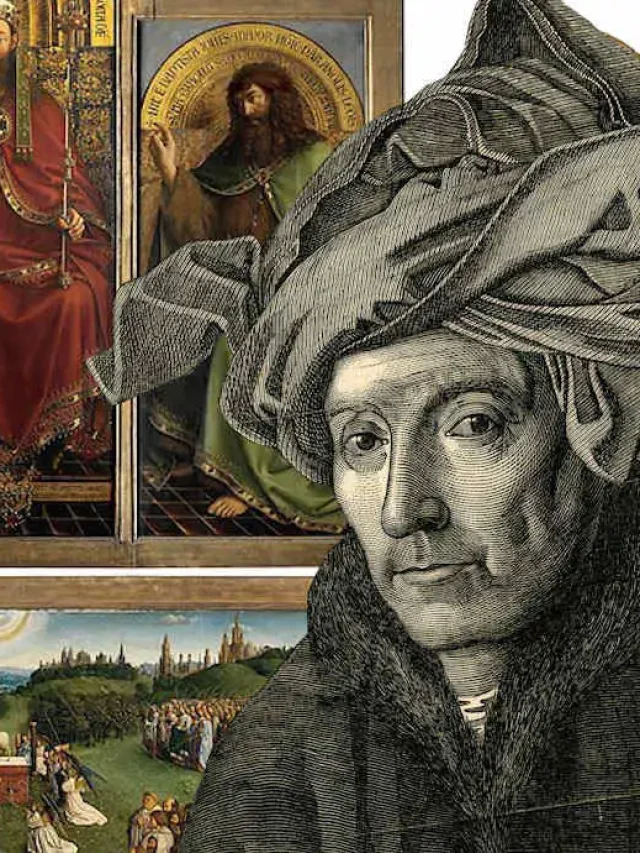The Arnolfini Portrait was painted in 1434 by the Early Netherlandish painter, Jan Van Eyck. It is alternatively known as the ‘Arnolfini Wedding Portrait.’ The painting narrates the triviality of monotony during the Northern Renaissance. In addition to the subjects, the painting includes conceited elements imbibed with symbolic meanings. Jan van Eyck Arnolfini’s Portrait is undoubtedly a masterpiece. It goes beyond a mere depiction of a fleeting moment in time. Van Eyck’s artistic sensibilities and his knowledge of symbolism render the painting a delectable poetry and a rich narrative. It describes the complexity of marriage, spirituality, and societal values in the Northern Renaissance.
Setting of Jan Van Eyck’s The Arnolfini Portrait
The Arnolfini Portrait by Jan Van Eyck depicts a couple (Giovanni Arnolfini and his Wife) in an opulent room. It is as if the audience is a voyeur creepily looking at a seemingly private moment. While simple to the eyes, as the viewer begins to immerse themselves into the masterpiece, the layers of Arnolfini Portrait Symbolism shed themselves. The richness of metaphors and allegories is what makes Van Eyck Arnolfini’s Portrait an emblem of his artistic brilliance and the cultural nuances of the ancient contemporary.
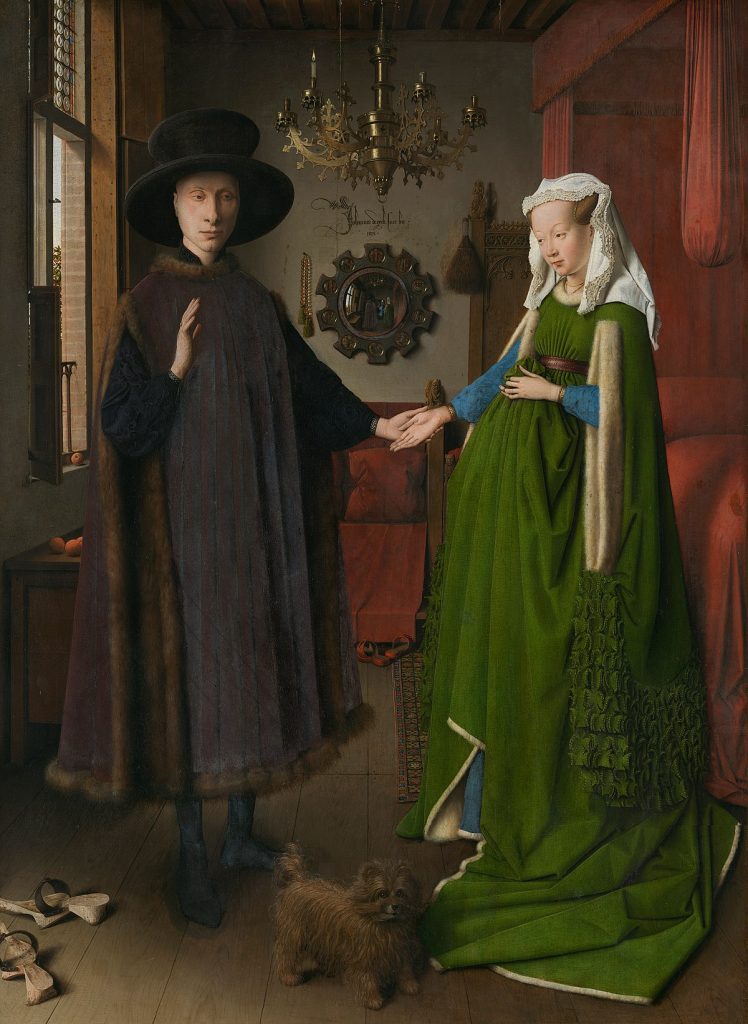
As soon as the excellence of Jan Van Eyck’s The Arnolfini Portrait hits the viewers, they notice two central figures (a man and a woman) standing on either side of the frame. For this reason, it is seldom known as the ‘Arnolfini Double Portrait.’ The setting is a lavishly adorned room, fitted with luxuries of the time. The symbolism of intricate textiles, meticulous patterns, and magnificent objects is an ode to the exuberant lifestyle of the bourgeoisie. The chandelier, the mirror, and the woven carpet comprise the backdrop allowing the richness of the visual narratives to be successfully absorbed.
Arnolfini Portrait Mirror Symbolism
A convex mirror is situated right at the centre of the Arnolfini Portrait, right at the eyeline of the viewers. The mirror reflects the effigies of the two figures. The mirror is located behind the Arnolfinis – they seem to be unaware of the object’s presence (which may be a subtle nod to the arrogance of the upper-class society). However, the Arnolfini Portrait mirror notices and observes all. It seems to be a symbol of divine presence – a ubiquitous God.
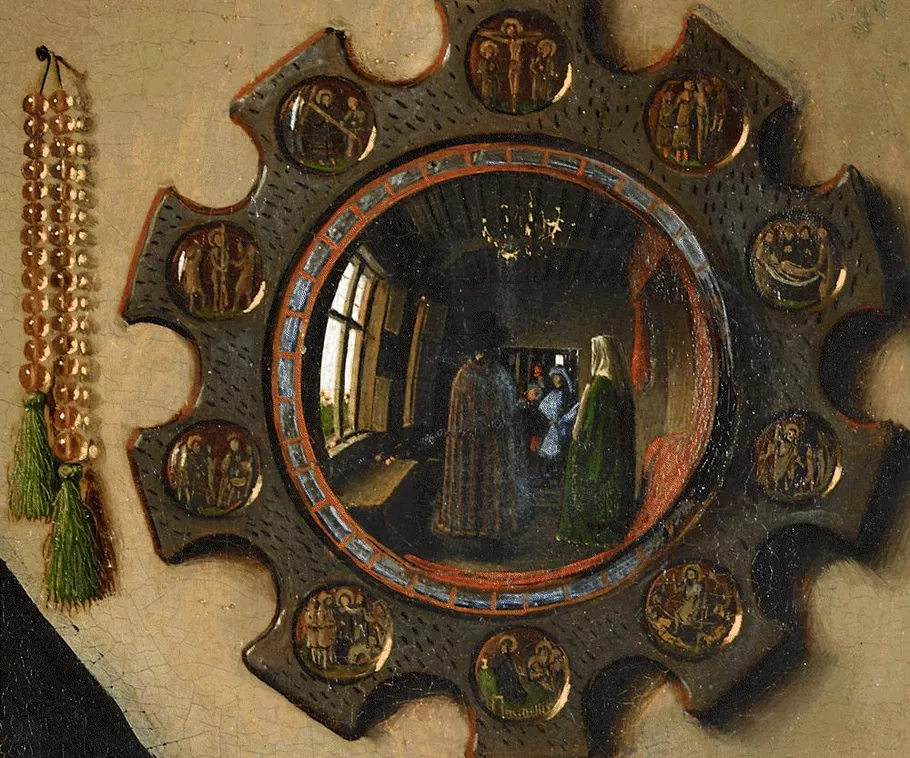
The Arnolfini are engaged in privacy. As is with modern court marriages, a witness is required to corroborate the facts. In a precarious position like this, the ‘God’ or rather the mirror is a witness to the couple’s union, sealing them in holy matrimony. The reflection, so carefully painted in the Arnolfini Portrait mirror may also connote two people, the audiences cannot see (their actual witnesses perhaps!)
Arnolfini Portrait Dog Symbolism
Nestled between the feet of the Arnolfinis is a small dog. Since time immemorial, dogs have been a symbol of loyalty and fidelity. Whether it is the mythical Yudhisthara’s dog, following him to heaven or poor Hachiko waiting at the train station for his master to come, it is hard for dogs to deviate from this imagery.
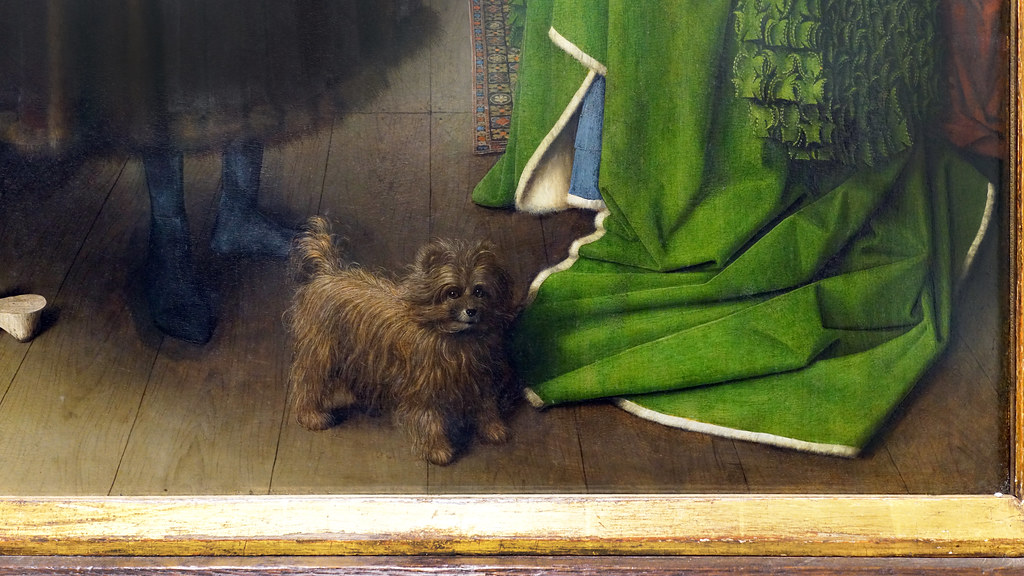
The same can be said about the dog in Van Eyck Arnolfini’s Portrait, bearing witness to its masters’ commitment. If viewed from the spectacle of marriage, the dog may also connote loyalty and fidelity between the couple. In other words, the couple’s commitment to each other is as pious as a dog’s loyalty to its owner.
Arnolfini Portrait Carpet Symbolism
The carpet in the Arnolfini Portrait by Jan Van Eyck is a testament to the couple’s lavish lives. In the Early Renaissance, carpets were solely found in affluent homes. These carpets were exquisite, carrying heavy and intricate patterns, yet were trod on. Therefore, the carpet, strategically placed under the couple’s feet represents their wealth and social status thereby bringing a refinement to their tastes.
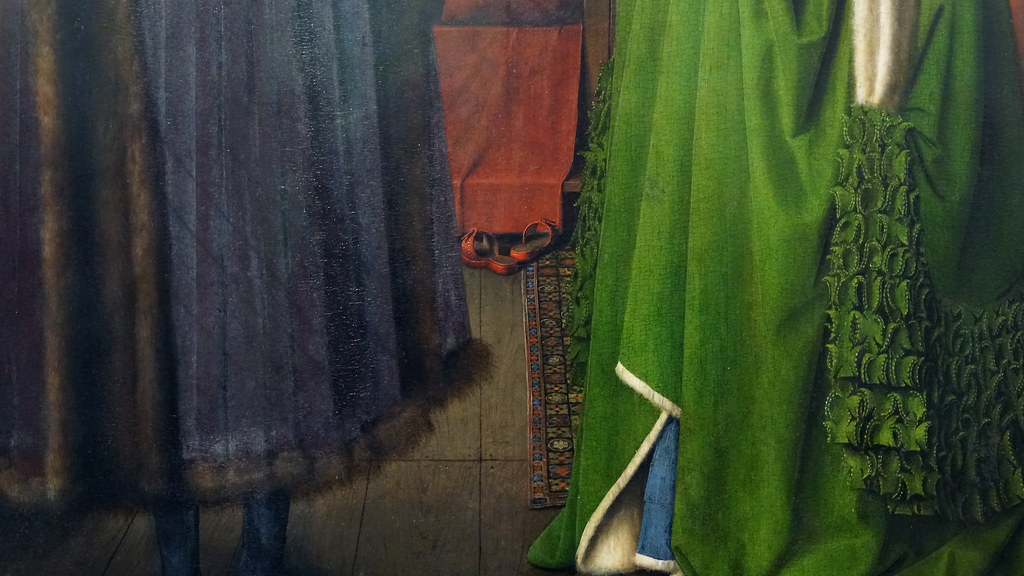
Arnolfini Portrait Green Dress and Orange Symbolism
While a woman traditionally wears white at her wedding, the woman in Jan Van Eyck’s The Arnolfini Portrait is seen wearing green. The colour green is representative of a woman’s fertility. It also symbolizes hope. The green dress has been painted in such a way that it exuberates luxury and has a fluidity to it – all denoting Van Eyck’s artistic grandeur.
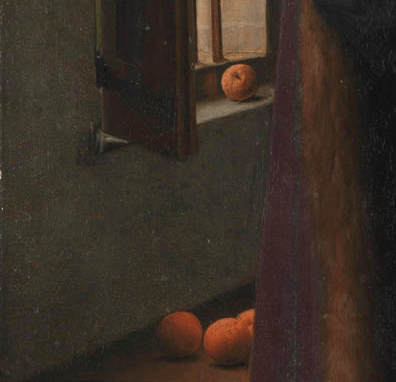
In the Early Renaissance period, oranges were a luxury. They were extremely rare and hence quite precious. We notice that a single orange graces the windowsill, while several have fallen onto the floor (without notice). While it is assuredly a testament to the regality of the Arnolfini, they also connote fertility and prosperity. Therefore, the fruit is suggestive of a prosperous marriage in the Arnolfini Double Portrait.
Photo Courtesy – The Collector

